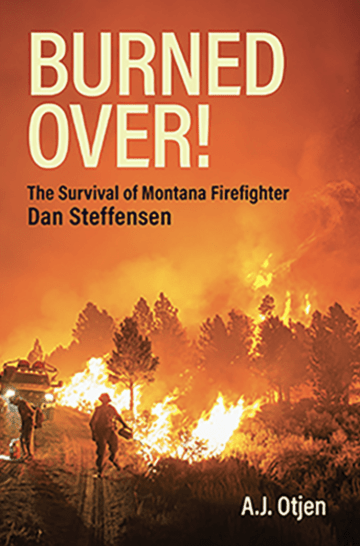
Korean short ribs, or Kalbi, are a delicious and popular dish that showcases the rich flavors of Korean cuisine. Known for their sweet and savory marinade and tender meat, these ribs are perfect for a backyard barbecue or a special dinner with family and friends.
Preparing the best ribs involves a few essential steps, from selecting the right cut of meat to mastering the marinade and grilling techniques. This step-by-step manual will guide you through the process, ensuring that your ribs are perfectly cooked and full of flavor.
Selecting and Preparing the Meat
The first step in making the ribs is selecting the right cut of meat. For Kalbi, you need flanken-style short ribs, which are cut across the bone into thin strips. These ribs are ideal for grilling because they cook quickly and evenly, allowing the marinade to penetrate the meat fully. When shopping for short ribs, look for well-marbled meat with a good ratio of fat to lean. This marbling ensures that the ribs will be tender and juicy once grilled.
For this recipe, we suggest getting 2 lbs. of ribs that are sliced ¼ inch across the bone.
Once you have your short ribs, it's time to prepare them for marinating. Start by rinsing the ribs under cold water to remove any bone fragments. Pat them dry with paper towels, and then use a sharp knife to make shallow cuts in the meat. These cuts help the marinade penetrate more deeply and ensure even cooking. Be careful not to cut too deeply, as you don't want to sever the meat completely.
Making the Marinade
The key to delicious Korean Grilled Short Ribs lies in the marinade. The traditional marinade for Kalbi combines soy sauce, honey, garlic, and rice wine, creating a perfect balance of sweet, salty, and savory flavors. To make the marinade, you'll need the following ingredients:
• 2 cloves garlic, peeled
• 1 scallion
• 1 pear, peeled and cored
• ½ cup soy sauce
• 2 tablespoons toasted sesame oil
• 1 tablespoon honey
• 1 teaspoon rice wine
Begin by finely mincing the garlic and scallion. Next, grate the pear using a fine grater. The pear not only adds a subtle sweetness but also contains enzymes that help tenderize the meat.
In a medium mixing bowl, combine the minced garlic, scallion, and grated pear. Add the soy sauce, toasted sesame oil, honey, and rice wine.
Whisk the ingredients together until well combined. This marinade not only flavors the meat but also helps to tenderize it, making the ribs incredibly juicy and delicious.
Marinating the Ribs
Once the marinade is ready, it's time to marinate the short ribs. Place the prepared ribs in a large resealable plastic bag or a shallow dish, and pour the marinade over them. Ensure that the ribs are evenly coated with the marinade, and then seal the bag or cover the dish with plastic wrap. Refrigerate the ribs for at least 4 hours, but preferably overnight. The longer the ribs marinate, the more flavorful they will become.
While the ribs are marinating, it's a good idea to turn them occasionally to ensure that the marinade is evenly distributed. This step helps to enhance the flavor and tenderness of the meat. If you're short on time, you can marinate the ribs for a minimum of 2 hours, but for the best results, an overnight marinade is highly recommended.
Grilling the Ribs
Grilling is the final step in creating the perfect Korean ribs. Preheat your grill to medium-high heat, around 375°F to 400°F. Make sure the grill grates are clean and lightly oiled to prevent the ribs from sticking. Remove the ribs from the marinade, letting any excess drip off, and discard the marinade.
Place the ribs on the grill in a single layer, ensuring that they are not overcrowded. Grill the ribs for about 3 to 4 minutes per side, or until they are nicely charred and cooked through. The thin slices of flanken-style short ribs cook quickly, so keep a close eye on them to prevent overcooking. The ribs should have a beautiful caramelized crust on the outside while remaining juicy and tender on the inside.
To achieve the best results, resist the urge to move the ribs around too much on the grill. Allow them to sear properly on one side before flipping them over. This technique helps to develop a rich, smoky flavor and creates those coveted grill marks. Once the ribs are cooked to your desired level of doneness, remove them from the grill and let them rest for a few minutes before serving.
Serving the Ribs
Ribs are best served hot off the grill. Arrange them on a large platter and garnish with additional toasted sesame seeds and chopped green onions for a burst of color and flavor. These ribs are typically enjoyed with a variety of side dishes, known as banchan, which can include kimchi, pickled vegetables, and steamed rice.
For an authentic Korean dining experience, serve the ribs with lettuce leaves, which can be used to wrap the meat along with a spoonful of rice and a dab of ssamjang (a spicy Korean dipping sauce). This interactive way of eating adds to the enjoyment of the meal and allows your guests to customize their bites to their liking.
Short ribs also pair well with a refreshing cucumber salad or a simple green salad dressed with a sesame vinaigrette. The contrast of the cool, crisp vegetables with the rich, savory ribs creates a balanced and satisfying meal. Whether you're hosting a barbecue or a family dinner, these ribs are sure to be a hit.
Conclusion
Making Korean short ribs at home is a rewarding and delicious endeavor. By carefully selecting and preparing the meat, creating a flavorful marinade, and mastering the grilling technique, you can enjoy this iconic Korean dish with your family and friends. The combination of sweet and savory flavors, tender meat, and smoky char from the grill makes these ribs an unforgettable culinary experience.
With this step-by-step guide, you'll be well-equipped to create restaurant-quality Kalbi that will impress and delight everyone at your table. So, fire up the grill and get ready to enjoy some of the best ribs you've ever tasted!









News Comments
Finally, art students need these amenities for graphic designing and essay writing.
8 Essential Factors to Consider Before Joining College
bupole
Wednesday, Dec. 11, 2024
Thank you
Open Auditions for Annie
Monday, Sep. 16, 2024
I’m at the Bozeman airport where your painting, “Blowing East” is displayed. It’s absolutely gorgeous! Bravo, Marci!!
The Artists’ Gallery in Bozeman’s Emerson Cultural Center May Exhibits
Sunday, Jun. 30, 2024
This is so typical of a sign in, which we should not have to do to check if we or some one in our party got a permit. I have been working or "creating an account" for 30 minutes and just get the same ...
Smith River permit drawing results available
Sunday, Mar. 10, 2024